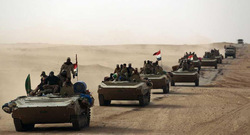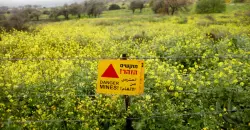War debris, landmines stop Syrians from returning

Shafaq News/ Landmines remain the primary obstacle preventing displaced families in Syria from returning to their homes and reviving agricultural and economic activity, the Syrian Civil Defense (White Helmets) said on Tuesday.
The director of the Community Resilience Support Program Ali Mohammed told Shafaq News that the organization launched a new operational campaign titled “Hope for the Returnees: Toward a Safe Return for the Displaced” following political changes in Syria and the collapse of the Assad regime.
Hope for Returnees: Toward a Safe Return for the DisplacedA White Helmets campaign to revive areas devastated by attacks on civilians by the Syrian regime and Russia, making it safer for civilians to return by clearing roads, removing war debris, recovering the deceased, and… pic.twitter.com/sUNQVMvoec
— The White Helmets (@SyriaCivilDef) December 5, 2024
The campaign began on January 1 in western Aleppo and eastern Idlib, expanding across other provinces based on geographic priorities, he pointed out, revealing that between December 1, 2024, and the end of February 2025, the teams reopened over 1.56 million meters of blocked roads and cleared more than 30,000 cubic meters of rubble.
There are three types of road blockages across Syria. The first includes roads unintentionally closed due to airstrikes or military operations; most of these, whether primary or secondary roads, have been reopened, particularly in cities behind former frontlines in provinces like Idlib, Aleppo, Latakia, Hama, Deir ez-Zor, Daraa, Damascus, , Homs, and Quneitra, Mohammed explained.
The second type involves roads sealed off with dirt berms rigged with landmines, which cannot be cleared without dedicated demining operations. The third includes roads inside urban areas closed with concrete barriers, many of which have been removed in coordination with local councils.
Areas that remain difficult to access, according to the Syrian official, include northeastern and eastern Aleppo countryside—previously controlled by the Syrian Democratic Forces—as well as parts of western and southern Aleppo, Idlib and Hama country sides, damaged towns in Damascus countryside, and neighborhoods in Damascus (such as Jobar and Yarmouk), Homs, Latakia, Daraa, and Deir ez-Zor.
Over 600 people, including children, have been killed or injured by landmines and explosive remnants of war across Syria since December 2024, according to Human Rights Watch.



